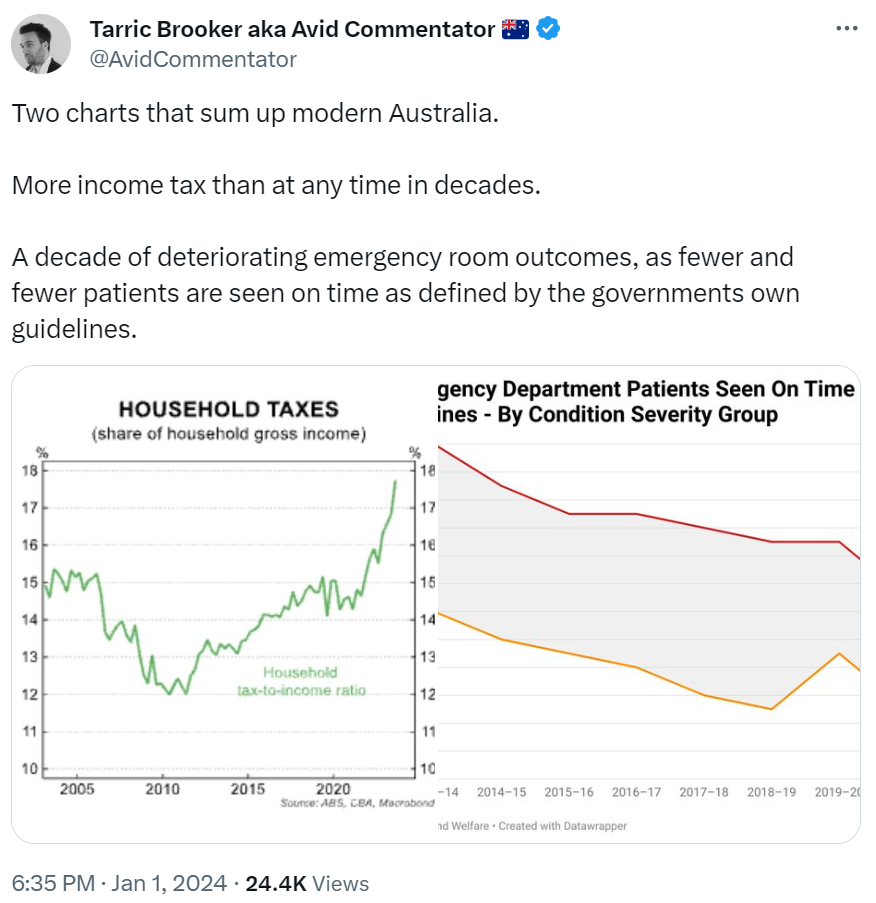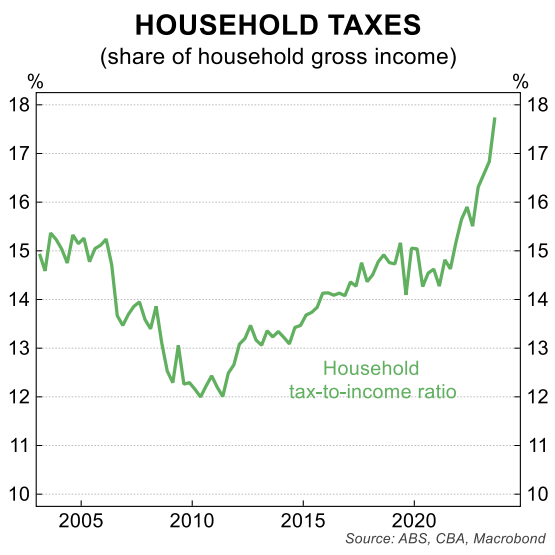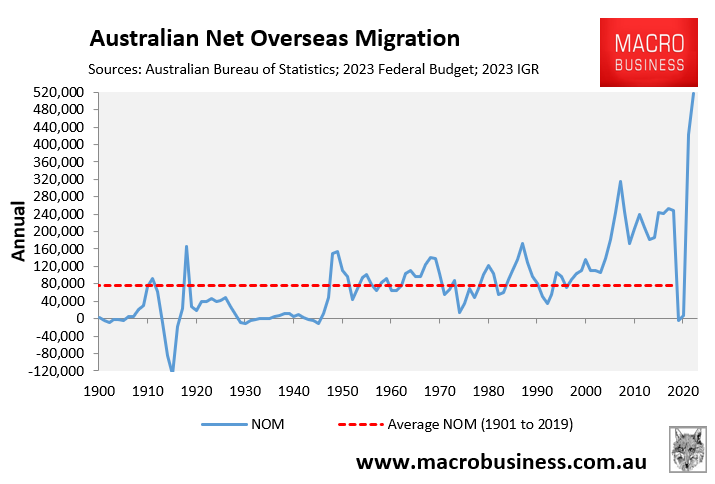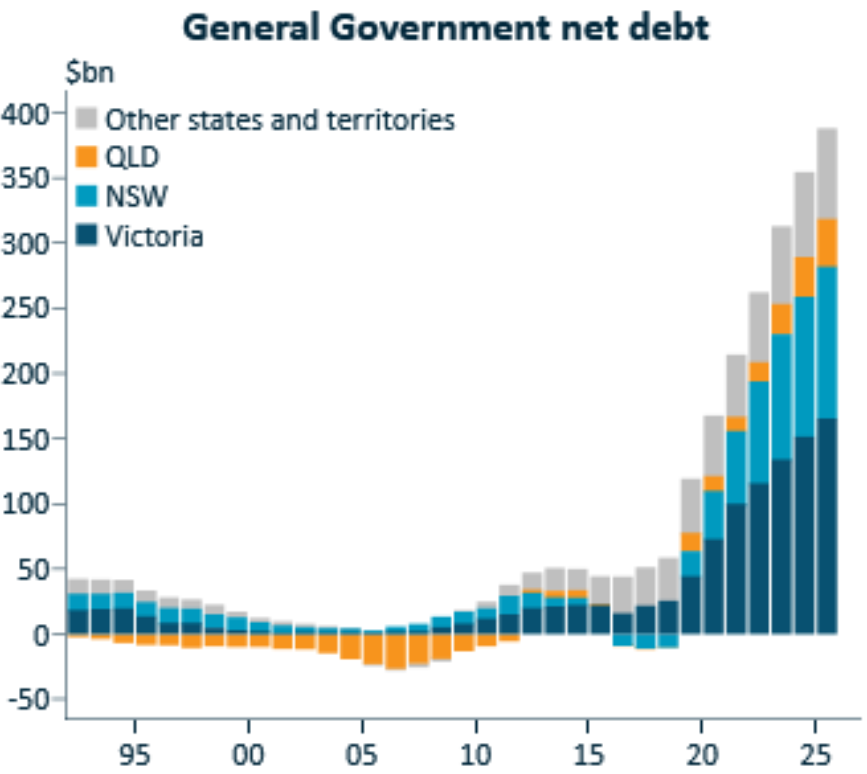As he so often does, independent economist Tarric Brooker hit the mark with the below Tweet highlighting the inconsistencies of modern Australia:

Brooker notes that the federal government is collecting a record share of income taxes from Australian households:

Yet, despite the boom in income taxes collected, Australians are waiting longer than ever to be seen by hospital emergency departments:

The above Tweet neatly encapsulates the problems inherent in the fiscal structure between Australia’s various levels of government.
Australia’s system of government has embedded deep vertical fiscal imbalances (VFI), whereby the federal government collects around 80% of the nation’s tax revenue (primarily via personal and company taxes), while the states and local government’s collect only around 20% of taxes.
The states are primarily responsible for service delivery (e.g. hospitals and schools) as well as infrastructure, and this VFI has left the states with responsibilities that are well in excess of their revenue bases.
The situation is made worse by the federal government’s mass immigration policy, which bolsters the federal government’s tax take (via personal and company taxes), while dramatically increasing demand for public services (e.g. healthcare) and infrastructure.

Immigration is doubly beneficial from a federal budget perspective when the federal government refuses to match spending on infrastructure and services to the growth in the economy.
This has been the story of Australia over the last 20 years, with housing, infrastructure and business investment all failing to keep pace with record immigration-driven population growth, which has caused severe capital shallowing, congestion, and declining productivity growth:

Source: Gerard Minack
While the federal budget gains financially from record immigration, the state governments – who are primarily responsible for the infrastructure and services required for the growing populations – are drowning in debt:

Source: Alex joiner (IFM Investors)
NSW (Sydney) and Victoria (Melbourne) receive the lion’s share of Australia’s net overseas migration:

As a result, both Victoria and New South Wales have been caught short when it comes to providing infrastructure and services to their ballooning populations.
The problem will only worsen as the Albanese government continues to flood the country with historically high numbers of migrants (especially in Melbourne and Sydney). State finances will continue to drown in a sea of debt.
That is the reality of the situation.
I’m sure the Australian Treasury and federal government would be less enthusiastic about immigration if they were required to share the financial burden with the states.
The federal government should be required to provide $100,000 in direct transfers to the states for every permanent migrant that settles in their jurisdiction to cover the added cost of infrastructure and public services.
Doing so would more closely align the fiscal costs and benefits of immigration among the various levels of government.

